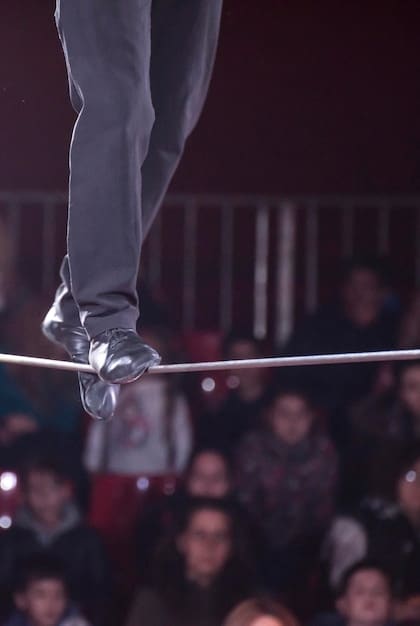Genre Bending: Exploring Movies That Defy Categorization

Anúncios
Genre bending occurs when films blend elements from different genres, creating unique and often unexpected cinematic experiences that challenge conventional categorization, pushing the boundaries of storytelling.
Anúncios
Have you ever watched a movie that left you scratching your head, unable to quite nail down what genre it belonged to? That’s likely a case of genre bending, a fascinating phenomenon in cinema where filmmakers intentionally blur the lines between established categories.
What is Genre Bending?
Genre bending is exactly what it sounds like: a film that deliberately mixes elements from two or more genres. It’s a creative approach that allows filmmakers to explore new narrative possibilities and create something truly original. Let’s explore some core concepts related to this filmmaking technique.
Anúncios
Defining Genre Bending
Genre bending isn’t just about adding a small twist of one genre to another; it’s a more significant fusion. It involves taking core elements from different genres and weaving them together to create a new cinematic experience that defies easy categorization.
Why Do Filmmakers Bend Genres?
Filmmakers might choose to bend genres for various reasons. It could be to offer a fresh perspective on familiar tropes, to challenge audience expectations, or simply to tell a more complex and nuanced story that fits neatly into a single box. Genre bending can also be a way to tackle serious themes with a lighter touch, or vice versa.
- Creates originality and surprises audiences.
- Allows for deeper exploration of themes by combining different perspectives.
- Can revive stale genres by injecting fresh ideas.
- Attracts a wider audience by appealing to fans of multiple genres.
Ultimately, genre bending is a tool for creative expression, allowing filmmakers to experiment with narrative structures and push the boundaries of what cinema can be. It’s about breaking free from the constraints of tradition and forging new paths in storytelling.
The Rise of Genre Bending in Modern Cinema
Genre bending, while not entirely new, has become increasingly popular in recent years. This rise is partly due to audiences becoming more sophisticated and open to unconventional storytelling. Let’s walk through some contributing factors.
Changing Audience Tastes
Today’s moviegoers are often more open to complex and challenging narratives than previous generations. They appreciate originality and are less likely to be put off by films that don’t fit neatly into established categories.
The Influence of Independent Cinema
Independent filmmakers have long been at the forefront of genre bending. With fewer constraints and a greater willingness to experiment, they’ve paved the way for more mainstream movies to embrace this approach. Their success has shown larger studios that genre bending can be commercially viable.

The rise of genre bending mirrors a broader trend towards narrative complexity and innovation in cinema. As audiences continue to seek out fresh and engaging stories, filmmakers are likely to continue pushing the boundaries of genre, creating even more surprising and unpredictable cinematic experiences.
Examples of Successful Genre-Bending Films
To truly understand genre bending, it’s helpful to look at some specific examples. These films demonstrate the diverse ways in which filmmakers can blend genres to create something unique and memorable. Here are a few notable examples:
“Shaun of the Dead” (2004)
This British film is a perfect example of a horror-comedy. It seamlessly blends the gruesome thrills of a zombie movie with laugh-out-loud humor, creating a highly entertaining and original experience. The film’s success proved that audiences were receptive to unconventional genre combinations.
“Parasite” (2019)
Bong Joon-ho’s “Parasite” defies easy categorization, blending elements of dark comedy, thriller, and social satire. The film’s unexpected twists and turns keep audiences on the edge of their seats, while its sharp commentary on class inequality adds depth and resonance.
- “Pulp Fiction” (1994): Crime, Drama, and Black Comedy.
- “Scott Pilgrim vs. the World” (2010): Action, Comedy, and Romance.
- “The Cabin in the Woods” (2012): Horror and Comedy.
These films represent just a small sample of the many successful genre-bending movies out there. They demonstrate the power of this approach to create unique and engaging cinematic experiences that resonate with audiences.
The Challenges of Genre Bending
While genre bending can be incredibly rewarding, it also presents several challenges for filmmakers. Balancing different genre elements, managing audience expectations, and avoiding clichés are just some of the hurdles they must overcome. Let’s explore these challenges in more detail.
Balancing Different Genre Elements
One of the biggest challenges is finding the right balance between the different genres being combined. Overemphasizing one genre at the expense of others can lead to a disjointed and unsatisfying experience. The key is to weave the elements together seamlessly, creating a cohesive and harmonious whole.
Managing Audience Expectations
Genre bending can also be risky in terms of audience expectations. Viewers may come in expecting one type of movie and be surprised (or disappointed) to find something different. Filmmakers need to carefully manage these expectations, setting the tone and establishing the rules of the world early on.

Successfully navigating these challenges requires a clear vision, a deft touch, and a deep understanding of both genre conventions and audience psychology. When done well, genre bending can be a powerful tool for creating truly original and memorable films. However, it’s a high-wire act that requires skill and precision.
How Genre Bending Impacts Storytelling
Genre bending isn’t just a stylistic choice; it can also have a profound impact on the way stories are told. Let’s explore how mixing genres can influence narrative structure, character development, and thematic exploration.
Narrative Structure
Genre bending often leads to more complex and unpredictable narrative structures. Films may shift between different tones and styles, keeping audiences guessing and challenging their expectations. This can result in a more engaging and thought-provoking viewing experience.
Character Development
Genre bending can also influence the way characters are developed. When characters are placed in unconventional situations, they are forced to confront new challenges and adapt in unexpected ways. This can lead to richer and more nuanced character arcs.
Thematic Exploration
Finally, genre bending can open up new avenues for thematic exploration. By combining different genres, films can tackle complex issues from multiple perspectives, offering a more complete and nuanced understanding.
In essence, genre bending allows filmmakers to push the boundaries of storytelling, creating narratives that are more dynamic, engaging, and intellectually stimulating. It’s a powerful tool for exploring the complexities of the human experience through the lens of cinema.
The Future of Genre Bending
As audiences become increasingly open to unconventional storytelling, genre bending is likely to become even more prevalent in the years to come. This trend could lead to some exciting and unexpected developments in cinema. The acceptance of non-traditional storytelling will continue to impact filmmaking trends.
More Experimentation
We can expect to see even more experimentation with genre combinations, as filmmakers continue to push the boundaries of what’s possible. New and unexpected hybrids could emerge, challenging our preconceived notions about genre and its possibilities.
Greater Acceptance
As genre bending becomes more mainstream, audiences are likely to become even more accepting of films that defy easy categorization. This could lead to a wider range of genre-bending movies being produced and distributed, giving filmmakers more opportunities to experiment and innovate.
Ultimately, the future of genre bending is bright. As long as filmmakers are willing to take risks and challenge conventions, this approach will continue to evolve and surprise us, enriching the world of cinema in countless ways.
| Key Point | Brief Description |
|---|---|
| 🎭 Combining Genres | Blending different movie types to create something new. |
| 💡 Originate Films | A unique product for those tired of traditional cinema. |
| 🎬 Movie Examples | Shaun of the Dead, Parasite, and many others. |
| 🔮 Future of Cinema | More creative freedom for filmmakers with innovative storytelling. |
FAQ
▼
Genre bending refers to creating a film that mixes elements from two or more separate film genres. It is a creative approach that defies traditional categorization to create a unique cinematic experience.
▼
Filmmakers use genre bending to offer fresh perspectives, challenge audience expectations, and tell more complex stories. By mixing genres, filmmakers can explore themes deeply and create original films.
▼
Examples of successful genre-bending include “Shaun of the Dead,” which blends horror and comedy, and “Parasite,” which combines elements of dark comedy, thriller, and social satire for an unforgettable experience.
▼
Viewers can anticipate unconventional storytelling filled with unexpected twists. Genre-bending films often shift tones, blending different styles to keep viewers engaged while still offering deeper levels of thought.
▼
One of the biggest challenges is finding the proper balance of combining elements along with balancing audience expectations. Genre films run the risk of feeling disjointed if there is not a smooth flow between elements.
Conclusion
In conclusion, genre bending represents a dynamic and evolving trend in cinema. By defying categorization and embracing experimentation, filmmakers are creating unique and memorable cinematic experiences that resonate with audiences seeking originality and innovation. As the landscape of cinema continues to evolve, genre bending is poised to play an increasingly important role in shaping the future of storytelling.





